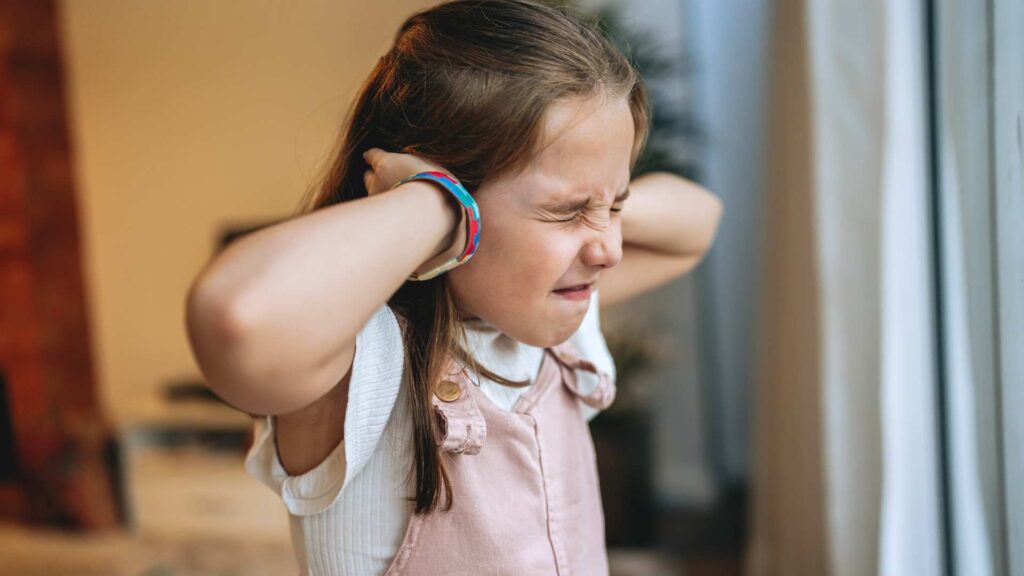Table of Contents
What does autism look like in girls?
For years, conversations about autism spectrum disorder (ASD) mainly focused on boys, leaving many families wondering why autism in girls seemed more complicated to recognize. According to the CDC, boys are nearly three times more likely to be diagnosed with autism than girls. Girls often slip through the cracks because their traits appear subtle or socially acceptable, which delays diagnosis and access to support.
Autism has never been a boys-only condition. The difference lies in how girls express it, how they cope with challenges, and how society interprets their behavior. Research shows that signs of autism in girls can look different from those in boys, and many girls learn to mask their struggles through imitation, social camouflaging, or constant self-correction. These strategies allow them to blend in, but they also lead to exhaustion, anxiety, and difficulty receiving timely support.
Understanding how autism shows up in girls helps caregivers, educators, and communities recognize their needs earlier and offer the proper support. This blog by ABA Centers of Georgia explores why autism often goes unnoticed in girls, what autism masking is, and why it is especially common among them, what additional support they may need, and how ABA therapy helps them develop meaningful skills.
Why Autism in Girls Often Goes Unrecognized
Researchers continue to uncover differences in the ways boys and girls show autism traits. By interviewing three special education professionals, the study by Frontiers shows that girls with autism receive a later autism diagnosis because they tend to mask their challenges through strategies like copying others, hiding confusion, or memorizing social responses.
These behaviors can make their difficulties less noticeable, leading to delayed recognition and, over time, increased emotional strain such as anxiety or depression. Many girls receive referrals for evaluation only when these internal struggles become more apparent, often during adolescence, leading professionals to assess them for mood or eating disorders instead of autism.

The study also highlights that current diagnostic tools are based on how autism commonly appears in boys, underscoring the need for gender-informed assessments to ensure earlier identification and better support for girls.
While autism affects all genders, girls tend to present differently, leading to fewer or later diagnoses. Understanding these differences helps families notice early signs and advocate for appropriate evaluations. Some may include:
Girls Often Develop Social Awareness Early
Many girls pick up social cues through observation. They notice how peers act, how conversations flow, and how friendships function. Even if they don’t fully understand these interactions, they copy them effectively. This imitation can hide communication differences during early childhood.
Girls Tend to Mask Their Challenges
Girls often work hard to fit in. They rehearse responses, imitate gestures, and avoid behaviors that might draw attention. This ability to camouflage their autistic traits frequently leads to late or missed diagnoses and contributes to increased stress and burnout.
Society Assumes Girls Are Naturally Social
When a girl seems quiet, reserved, or independent, many adults interpret this as shyness or maturity rather than a sign of autism. As a result, traits go unexamined because they match gender expectations rather than developmental needs.
5 Common Signs of Autism in Girls
The signs of autism in girls often differ from those seen in boys, or they appear in ways that others overlook. Although every girl is unique, several traits commonly show up across ages.
Subtle Social Differences
Girls may struggle to maintain conversations, understand sarcasm, or interpret social rules, even when they appear socially engaged. They often rely on learned scripts instead of intuitive communication.
Intense Interests with Social Themes
Many girls with autism develop deep interests, but their interests might seem typical because they involve characters, animals, art, stories, or friendships. The intensity, rather than the topic, is what makes them unique.
Strong Sensory Sensitivities
Sensory experiences often affect girls deeply. Noise, light, fabric textures, or crowded rooms may trigger discomfort or overwhelm, even when they appear composed on the outside.
Perfectionism and High Internal Pressure
Girls often work hard to perform well academically and socially to avoid criticism. This pressure can cause anxiety, meltdowns at home, and emotional exhaustion.
Preference for Routine
Girls may seek structure to feel safe. Changes in schedule, unexpected events, or transitions can cause distress, which may manifest as withdrawal, irritability, or repetitive calming behaviors.
Recognizing these traits helps families identify when a deeper evaluation may be helpful.
What Is Autism Masking and Why Does It Happen More in Girls
One of the most essential concepts in understanding autism in girls is masking. Autism masking refers to the strategies individuals use to hide or compensate for their autistic traits. Girls often mask instinctively, especially in social settings.
Masking may include:
- Copying peers’ social behavior
- Memorizing conversational responses
- Smiling to hide confusion
- Suppressing stimming behaviors
- Forcing eye contact
- Laughing along even when something isn’t understood
- Observing instead of participating, but appearing engaged
Masking helps a girl avoid standing out, but it comes at a cost. It requires constant self-monitoring and can lead to fatigue, anxiety, social burnout, and difficulty understanding her own identity. Masking also delays diagnosis, since many traits become invisible to parents, teachers, and clinicians.
Girls who mask often receive diagnoses later in life, sometimes only after experiencing depression, school refusal, or social exhaustion.
How Girls with Autism Navigate Childhood and Adolescence
Girls with autism experience the world with a unique blend of strengths and challenges.
Childhood
During the early years, many girls rely on routines and imaginative play. Some play alone contentedly but may struggle with cooperation or shared pretend play. Others form friendships but feel overwhelmed by the emotional complexity those friendships require.
School Years
As academic demands rise, girls may excel in structured tasks but struggle with group projects, unstructured time, or sensory-heavy environments like cafeterias or gyms. Their social world becomes more nuanced, and misunderstandings can become more frequent.
Adolescence
Teen years introduce deeper social expectations. Many girls describe feeling anxious, disconnected, or unsure how to maintain friendships. Sensory sensitivities may intensify with hormonal changes, and masking becomes harder to sustain.
Understanding this journey helps families, educators, and clinicians create supportive environments that meet girls where they are emotionally and developmentally.
How ABA Therapy Helps Girls with Autism Thrive
ABA therapy provides individualized support based on the unique needs of each child. For girls with autism, ABA can be an essential tool that focuses on building meaningful skills instead of trying to change who they are.
ABA therapy helps girls strengthen:
- Communication
- Daily living skills
- Emotional regulation
- Social connections
- Executive functioning
- Independence
- Self-advocacy
With consistent, individualized support, girls learn how to navigate sensory experiences, manage transitions, understand social expectations, and feel more confident in daily life.
How ABA Centers of Georgia Supports Girls and Families
At ABA Centers of Georgia, we recognize that autism touches children from every background and every walk of life. Girls with autism deserve recognition, understanding, and support that reflects their strengths and challenges.
We offer personalized ABA therapy created around each child’s needs and abilities. Families can access services in our centers in Alpharetta and Atlanta, as well as in-home or in-school programs that bring therapy directly to where children learn and grow.
If your child has received an autism diagnosis or if you suspect your child may be on the spectrum and needs guidance, our team is ready to help. Call us at (855) 929-5058 or contact us online. We provide compassionate, evidence-based care that supports her development, independence, and well-being.











